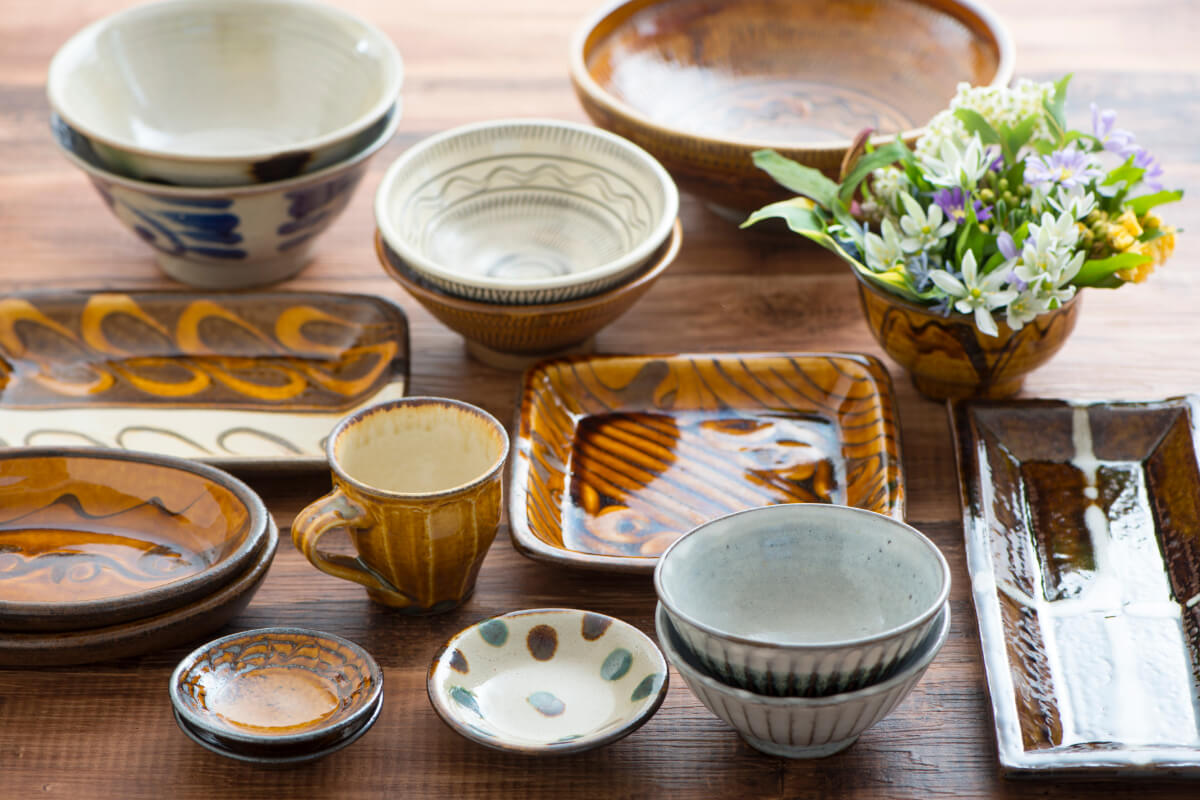Pottery Day

The origin of Pottery Day is “toshi”
Japanese pottery begins with Jomon pottery from 10,000 years ago. Its history traces a route through Yayoi pottery, which was created around the time of the start of the first millennium, through the Haji ware produced after the Kofun period, to the Sue ware that was created between the 5th and 12th centuries. Such are the origins of contemporary Japanese pottery.
Vessels glazed in Japan’s first copper-green glazes were created during the Nara and Heian periods. They were covered in two-colored and three-colored (otherwise known as “sancai”) glazes. During that period, these vessels were called “toshi.” Information about glazes and glazed vessel production and techniques is recorded in the Zobutsushosakumotsu Cho, a document stored in the Shosoin, a treasure storehouse at Todaiji Temple. The Zobutsushosakumotsu Cho is a report on the construction of the West Golden Hall at Kofukiji Temple and the creation of Buddha images, which took place over the course of a year from 733 (Tempyo 5). It also contains rather detailed information on the production of pottery.
In such a manner, pottery was known as “toshi” in ancient Japan. The syllables “to,” which is a homonym for “ten” in Japanese, and “shi,” a homonym for “four,” were taken from the word “toshi,” and October 4th was designated at “Pottery Day” in Japan.
The day we ponder on “life with pottery”
Pottery is used for various purposes in our daily lives. It not only decorates our dining table, but also enriches our lifestyles as a part of interior decorations. We don’t usually pay attention on these values that pottery has. Pottery day suggests you to pick up one of pottery you have, and to feel its value. It is the day encourages you to ponder on “life with pottery.”
